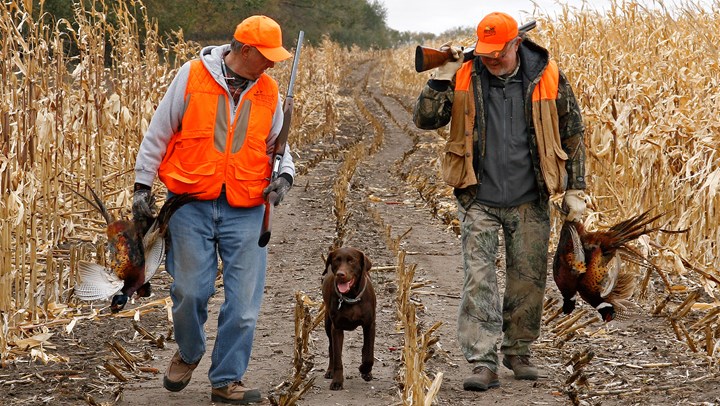
by Mark Damian Duda, Marty Jones and Tom Beppler of Responsive Management - Tuesday, September 13, 2016

Click here to download PDF version
Introduction
Americans care deeply about wildlife. Surveys have confirmed as much for as long as the topic has been measured, with concern for the well-being of wildlife populations spanning generational lines, political affiliation, geographic region of the country and numerous other attributes. This concern frequently leads to action: Millions of Americans each year donate to initiatives or causes benefiting various species and their habitat, and millions are also members of organized groups that work in the same areas.
Even those Americans who do not donate to such causes and who remain unaffiliated with specific organizations frequently take steps in their own daily lives (often on their own properties) to practice conservation, the umbrella concept under which most efforts to benefit wildlife fall. Conservation cannot exist without wildlife management, which is why the biologists, wardens, education experts and other professionals who staff federal and state fish and wildlife agencies and non-governmental organizations play such a critical role in the health of the nation’s species and habitat.
While it is undeniable that countless groups and individual Americans support wildlife conservation through federal and state taxes, donations, organized support and other means, one constituency stands apart in terms of its outsized contribution to the cause: hunters. The collective source of billions of dollars spent directly on wildlife management and other conservation efforts, hunters make up the grassroots of a support structure unparalleled in its size and monetary influence. It is no wonder, then, that former U.S. President and renowned conservationist Theodore Roosevelt once remarked, “In a civilized and cultivated country, wild animals only continue to exist at all when preserved by sportsmen.”

Sources of Funding from Hunters
The Pittman-Robertson Act
In the early part of the 1900s, modern ideas about wildlife management were still developing. One of the most important acts pertaining to wildlife conservation, and the funding for it, was passed during this time: the Federal Aid in Wildlife Restoration Act of 1937, sponsored by Sen. Key Pittman of Nevada and Rep. A. Willis Robertson of Virginia and, therefore, commonly called the Pittman-Robertson (P-R) Act. The legislation was prompted by knowledge that populations of many species, particularly game species, had become low as a result of poor (or no) management.
The P-R Act established a funding mechanism for wildlife conservation through an excise tax on sporting arms and ammunition and, later, a similar tax on archery equipment and handguns. The funds, collected by the U.S. Fish and Wildlife Service via the Wildlife Restoration Program, are then appropriated to state fish and wildlife agencies based on a formula accounting for each state’s land area and the number of paid license holders. One of the requirements of the P-R Act is that the excise tax revenues may only be used for wildlife conservation and hunting management; the Act further stipulates that hunting license sales revenues generated by the states can be used only by the state’s fish and wildlife agency.
By establishing the requirement that P-R tax revenues must be used for the purpose of wildlife management, the Act guaranteed that conservation funding in America would come principally from sportsmen. (By this token, non-hunting target shooters and archers are also important contributors to wildlife management through the P-R excise taxes.)
The Pittman-Robertson Act is therefore widely recognized as one of the most important accomplishments in conservation, as the Act’s excise tax on hunting and shooting equipment ensures a mechanism to fund conservation on a continuous basis. According to the U.S. Fish and Wildlife Service, since its passage, it has provided approximately $18 billion for the conservation, restoration and management of wildlife in the United States, as well as the other projects to which the excise tax revenues are dedicated—that’s billion with a “B,” an incredible amount of money that goes directly to wildlife conservation programs. Recent years have seen a substantial increase in P-R tax funding, thanks to the notable uptick in U.S. firearms and ammunition sales since 2008.
While the Pittman-Robertson Act is at the forefront of hunters’ contributions to wildlife conservation, other sources also help to generate essential and substantial funding for the same efforts.
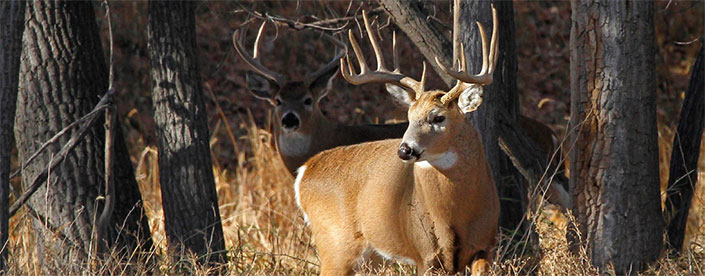
The Federal Duck Stamp
Preceding the passage of the Pittman-Robertson Act by just a few years was the 1934 introduction of the Federal Duck Stamp. A required purchase for any duck hunter in the United States, the Federal Duck Stamp is nonetheless available to all Americans to purchase as a way to contribute to conservation. It allows free entry into any of the nation’s National Wildlife Refuges, and its design is chosen each year through a national art contest coordinated by the U.S. Fish and Wildlife Service. Like the P-R Act, the stamp is a key funding source for wildlife conservation: By law, 98 percent of the stamp’s proceeds are used directly for the protection of wetlands and associated habitats. Since 1934, sales of the Stamp have generated roughly $800 million to secure wetlands and wildlife habitat for the National Wildlife Refuge System.
State-Level Licenses, Tags and Permits
Another hugely important funding source for conservation occurs on the state level through the licenses, tags and permits hunters in each state are required to purchase. Revenues from the sale of these items are used expressly to fund the state fish and wildlife agencies themselves (either in whole or in part) and, by extension, fish and wildlife management and conservation. The latest estimates from the U.S. Fish and Wildlife Service put the number of paid hunting license holders at around 15 million nationwide, bringing in around $821 million for wildlife conservation.
Nonprofit Conservation Organizations
Another important source of funding for wildlife conservation from hunters comes from not-for-profit organizations and their members and donors, many of whom are hunters. Many such organizations spend a substantial portion of their membership and donation income on on-the-ground conservation projects. A number of the nation’s most prominent not-for-profit conservation organizations relate to hunting in some way, such as Ducks Unlimited, the Rocky Mountain Elk Foundation and the National Wild Turkey Federation. Hunters are also strongly represented in the membership ranks of some organizations not specifically involved in hunting—perhaps because many hunters have developed a close connection to wildlife, including non-game species, through hunting. Interestingly, one research study examining propensity to donate to such organizations found that hunters voluntarily donated, on average, more than four times the amount that non-hunters voluntarily donated to wildlife conservation across the American landscape—not just donations to hunting organizations, but donations to wildlife conservation organizations of any kind.
Overview of How Funds Generated by Hunters are Spent
In 2013, the most recent year for which complete data are available, hunters spent about $821 million on licenses and permits and almost $813 million in excise taxes for a total financial contribution of around $1.65 billion to wildlife conservation. This is to say nothing of the accomplishments made possible through the work of nonprofit organizations supported by hunters, but these too factor into the overall contribution.
A Break Down of Pittman-Robertson Funding
According to the U.S. Fish and Wildlife Service, about two-thirds of Pittman-Robertson funds available to the states are used to buy, develop, maintain, and operate wildlife management areas (WMAs). This includes approximately 4 million acres that have been purchased by states since the program began. An additional estimated 40 million acres are managed for wildlife in agreements with landowners. For comparison, this total acreage benefiting wildlife exceeds the size of roughly half of the states in the United States, including Washington (42.6 million acres) and Florida (37.5 million acres). A few examples of the hundreds of efforts that have benefited from Pittman-Robertson funding include the creation of watering holes for wildlife to drink; the planting of tree and shrub cover for pheasants and quail and other wildlife during winter storms; and controlled burns of brush and grass to improve habitat for wild turkey and quail.
Some P-R funding goes toward scientific studies, in line with modern conservation strategies that use a science-based approach to wildlife management. These efforts include animal population estimate studies, hunter harvest surveys and other studies related to wildlife and habitat. Another portion of P-R funding is used for educational purposes, primarily for hunter safety, but also for hunter ethics and to help hunters (and the general population) understand wildlife and wildlife management.
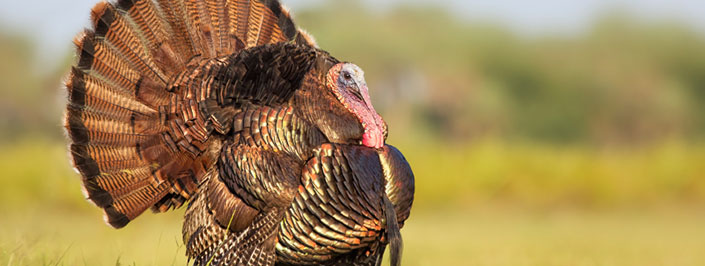
Wildlife Management and Species Recovery
Species recovery is a critical conservation impact made possible by hunters, as the original intent of the Pittman-Robertson Act was the recovery of species that were in precipitous decline. A few specific examples help to reinforce the achievement of management efforts that saw species near extinction resurging to healthy populations:
Species recovery efforts are not confined to game species. Non-game species benefit from habitat conservation as well, with funding from hunters being used to bring back animals like the trumpeter swan and the brown pelican. An especially prominent example is the bald eagle, of which only about 400 breeding pairs existed in the Lower 48 in 1963. Today, it is estimated that there are around 11,000 breeding pairs in the Lower 48.
Habitat Conservation and Protection
Conservation of habitat through the setting aside of lands is one of the most important tangible benefits of hunting. All states now have some lands that are set aside in the public domain for habitat protection, with funding from hunting being integral to acquiring those lands. Habitat, even for an individual species, does not comprise only one type of habitat; rather, it comprises feeding grounds, breeding grounds, denning and nesting grounds, and wintering grounds, as well as migration routes, movement corridors and associated resting grounds. Pittman-Robertson funding helps with all of these types of habitat, in part because it is a federal program, which means its benefits apply to all states across far-reaching animal ranges.
Beyond P-R funding, proceeds from the Federal Duck Stamp have helped to secure millions of acres of critical habitat. For example, Chincoteague National Wildlife Refuge in Virginia, an area encompassing more than 14,000 critical acres of habitat for hundreds of non-game species—including more than 300 species of birds alone—was purchased entirely by hunters through the sale of the Federal Duck Stamp. Wildlife Refuges throughout the country also provide habitat for a diversity of endangered non-game species. Florida’s Hobe Sound National Wildlife Refuge (encompassing 980 acres) is home to loggerhead and green sea turtles; Mississippi’s Sandhill Crane National Wildlife Refuge provides more than 19,000 acres for its namesake species; and Wildlife Refuges throughout California ensure habitat for the California condor, the long-toed salamander, the least tern and Lange’s metalmark butterfly, among others. The Federal Duck Stamp helped to fund habitat for all of these species and many more.
Biological Research
A component of species recovery and habitat conservation is research to guide managers on how well species populations are doing and what their habitat needs are. Without this research, the most basic work toward species recovery and habitat conservation would be haphazard and based on mere guesswork. With research on the health of populations, recovery efforts can be evaluated and fine-tuned as necessary. And with research on various species’ feeding and breeding needs, habitat conservation can be more targeted toward the habitats that should have the highest conservation priorities. Funding provided by hunters through the Pittman-Robertson Act has allowed for this important research.
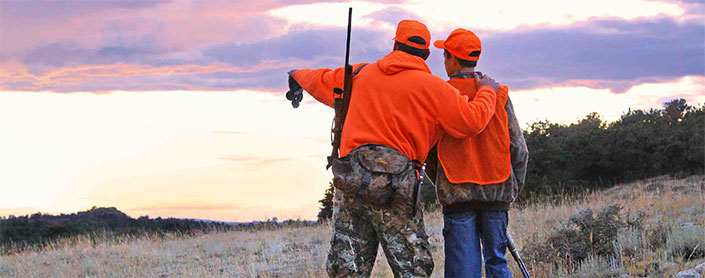
The Work of State Fish and Wildlife Agencies
Fish and wildlife agencies on the state level are supported wholly or in large part by license revenues (typically revenue from both hunting and fishing licenses). This funding is then used to administrate agency programs focused not only on species recovery and habitat maintenance but on enforcement and education.
While the enforcement of a state’s fish and wildlife laws is primarily the responsibility of the state’s fish and wildlife agency, the outcomes of such enforcement routinely benefit hunters and non-hunters alike. For example, a case in Indiana, investigated by the Indiana Department of Natural Resources, involved the theft of walnut trees from a person’s property. The effect was the destruction of an important tract of unique habitat in the area. State fish and wildlife agency enforcement personnel regularly investigate pollution and dumping violations. They are also called upon to help with the rescue of missing people. Even shootings of people are sometimes investigated by fish and wildlife agency law-enforcement personnel, as was recently the case when the Delaware Fish and Wildlife Natural Resources Police responded to a call of a man shot while sitting in a car in the parking lot of a local pond. The agencies involved in all of these cases depend on funding that comes from hunters.
A final component of in-the-field work supported by hunter dollars consists of education programs, primarily hunter education, but also nature-related education programs used by students, wildlife watchers and others. Of course, basic hunter education is an important responsibility of fish and wildlife agencies. The Pittman-Robertson Act stipulates that some of the revenue must be used for hunter education, though states also supply a percentage of matching funds to cover the costs. For instance, the Texas Parks and Wildlife Department reports that through P-R dollars, more than 67,000 people received hunter education certification from September 2013 to August 2014—in other words, 67,000 in one year’s time. In Oklahoma, P-R funds paid for education courses in 85 high schools and 20 junior high schools across the state.
Additionally, Larry Voyles, Director of the Arizona Game and Fish Department and former president of the Association of Fish and Wildlife Agencies, has compiled the following data demonstrating the collective reach and impacts of fish and wildlife agencies across the United States:
The Work of Nonprofit Conservation Organizations
The final source of funding relates to the work of nonprofit organizations—including many with extensive hunter support—and how their membership dues and donations are used to impact conservation. Many nonprofit organizations are dedicated to the recovery and health of specific animal populations. Major organizations that concern themselves with one (or a few) species include the Rocky Mountain Elk Foundation, Ducks Unlimited, the National Wild Turkey Federation, Whitetails Unlimited, Quality Deer Management Association, Pheasants Forever and the Ruffed Grouse Society, to name only a few. These organizations, primarily through donations (most of which come from hunters), conduct conservation efforts for their given species.
Nonprofit organizations also set aside extensive lands for conservation. An example of a recent Ducks Unlimited project for habitat conservation in Responsive Management's home state of Virginia is a 1,300-acre restoration project on the Hog Island Wildlife Management Area, undertaken in 2014-2015, that involved the installation of new pump stations, water-control structures, canal enhancements and embankments on Hog Island. In Virginia alone, Ducks Unlimited has restored and/or enhanced at least 45,000 acres of wetlands that are used by ducks as well as many other species.
Another example of the work done by a nonprofit organization that is almost wholly funded by hunters is the elk range that is protected by the Rocky Mountain Elk Foundation. Using a combination of acquisitions, access agreements and easements, the organization protects elk winter and summer ranges, migration corridors and calving grounds. The Foundation has had a role in hundreds of projects, including the purchase of a ranch adjacent to the Beaverhead-Deerlodge National Forest. The acquired land provides important elk habitat and allows for additional public access to hunting and fishing lands. In total, the Rocky Mountain Elk Foundation has protected more than 1,700 square miles of habitat for elk and other wildlife.
Conclusion
Hunters are integral to wildlife conservation in the United States. Through excise taxes, license and permit fees, and organizational membership dues and donations, hunters help to recover species, preserve habitat and ensure that state fish and wildlife agencies, including their crucial enforcement and education programs, are properly funded.
Americans care deeply about wildlife and consider the nation’s healthy wildlife populations to be an essential and inseparable aspect of the outdoor experience in the United States. Each year, millions of wildlife viewers, anglers, boaters, hikers and other recreationists head outside to experience the wildlife and other natural resources that have been preserved and maintained by hunters. From Theodore Roosevelt and Ernest Hemingway to 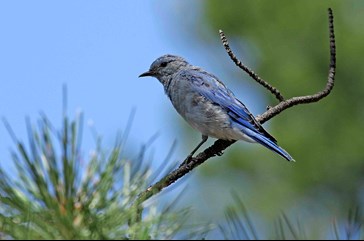
Aldo Leopold, John James Audubon and the modern American who purchases a license and steps into the woods today, hunters throughout the years have played a critical role in the stewardship of America’s wildlife populations and ensured their viability for future generations.
A final point regarding the dedication of hunters to conservation is worth noting. Decades ago, when the U.S. Congress was eliminating some excise taxes, hunters lobbied Congress to keep the Pittman-Robertson excise taxes in place. They were volunteering to be taxed in the interest of wildlife conservation. As Lonnie L. Williamson, former vice president/treasurer of the Wildlife Management Institute, asked, “How often have you encountered that situation?”
______________________________________
Editor's Note: Responsive Management (RM) is an internationally recognized public opinion and attitude survey research firm specializing in natural resource and outdoor recreation issues. Its mission is to help natural resource and outdoor recreation agencies and organizations better understand and work with their constituents, customers and the public. Using an in-house, full-service, computer-assisted telephone and mail survey center with 50 professional interviewers, RM has conducted more than 500 telephone and mail surveys and numerous personal interviews and focus groups, in addition to developing marketing and communication plans, needs assessments and program evaluations.
E-mail your comments/questions about this site to:
[email protected]
Proudly supported by The NRA Foundation and Friends of NRA fundraising.
